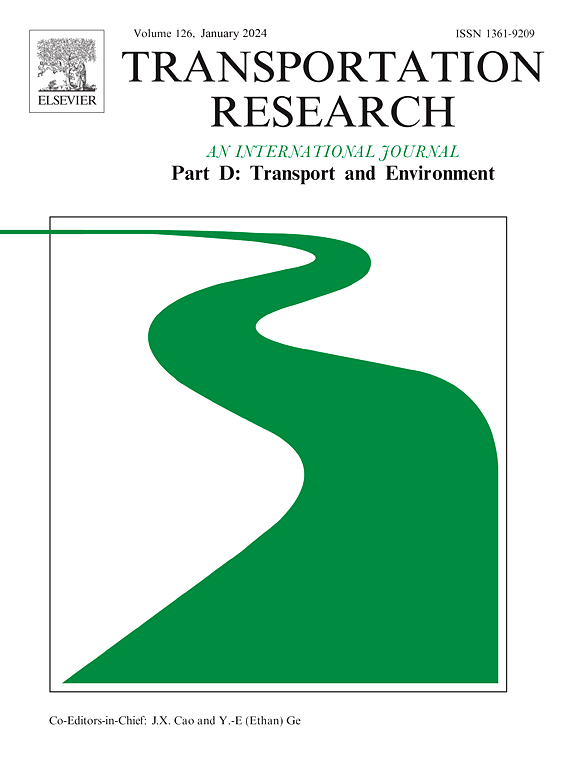贫困社区是否暴露于更高的PM2.5浓度?证据来自中国沧州
IF 7.3
1区 工程技术
Q1 ENVIRONMENTAL STUDIES
Transportation Research Part D-transport and Environment
Pub Date : 2025-04-22
DOI:10.1016/j.trd.2025.104762
引用次数: 0
摘要
由于环境保护和经济投资不足,贫困社区往往面临更高的环境暴露风险。估算污染暴露的高分辨率差异是解决此类环境正义问题的关键。本研究利用基于出租车的移动传感系统,于 2021 年在中国沧州开展了 PM2.5 测量活动。计算了贫困地区和富裕地区在污染暴露、健康影响和相关经济成本方面的差异。结果表明,平均值不能代表暴露不平等的全部程度,应强调分布特征。一些贫困地区的污染物浓度和相对风险超过了富裕地区的最大值。贫困地区内的差异更为明显,污染暴露的基尼系数为 9.12%,超过了富裕地区(2.28%)。但富裕地区的经济成本更高。这项研究有助于描绘发展中国家城市环境暴露的不平等现象,帮助制定政策,缩小环境健康差距。本文章由计算机程序翻译,如有差异,请以英文原文为准。
Are deprived communities exposed to higher PM2.5 concentrations? Evidence from Cangzhou, China
Deprived communities tend to face higher environmental exposure risks due to inadequate environmental protection and economic investment. Estimating high-resolution disparities in pollution exposure is key to addressing such Environmental Justice issues. This study conducted a PM2.5 measurement campaign in Cangzhou, China, in 2021, by using a taxi-based mobile sensing system. Disparities in pollution exposure, health impacts and related economic costs were calculated between deprived and affluent zones. The results showed mean values cannot represent the full extent of exposure inequality, and distributional characteristics should be emphasized. Pollutant concentrations and relative risks in some disadvantaged areas exceeded the maximum values in affluent areas. Disparities are more pronounced within deprived areas, with Gini coefficients for pollution exposure of 9.12%, exceeding affluent areas (2.28%). But affluent areas exhibit higher economic costs. The study contributes to portraying the inequalities of environmental exposure in developing country cities, helping formulate policies to mitigate environmental health disparities.
求助全文
通过发布文献求助,成功后即可免费获取论文全文。
去求助
来源期刊
CiteScore
14.40
自引率
9.20%
发文量
314
审稿时长
39 days
期刊介绍:
Transportation Research Part D: Transport and Environment focuses on original research exploring the environmental impacts of transportation, policy responses to these impacts, and their implications for transportation system design, planning, and management. The journal comprehensively covers the interaction between transportation and the environment, ranging from local effects on specific geographical areas to global implications such as natural resource depletion and atmospheric pollution.
We welcome research papers across all transportation modes, including maritime, air, and land transportation, assessing their environmental impacts broadly. Papers addressing both mobile aspects and transportation infrastructure are considered. The journal prioritizes empirical findings and policy responses of regulatory, planning, technical, or fiscal nature. Articles are policy-driven, accessible, and applicable to readers from diverse disciplines, emphasizing relevance and practicality. We encourage interdisciplinary submissions and welcome contributions from economically developing and advanced countries alike, reflecting our international orientation.

 求助内容:
求助内容: 应助结果提醒方式:
应助结果提醒方式:


